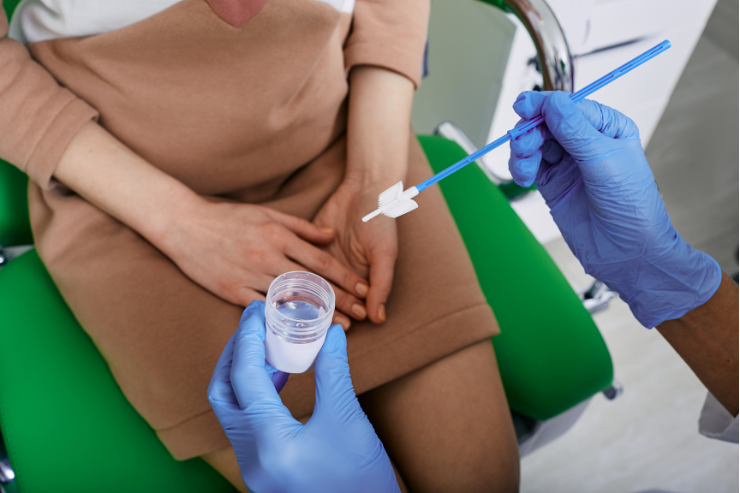Abnormal Pap Smears
- Home
- Treatments
- Abnormal Pap Smears

Abnormal Pap Smear results can be concerning but are a common occurrence that warrants careful follow-up. At Dr. Rupa Pandra, comprehensive care is provided for women with abnormal Pap smear results to ensure early detection and effective management of potential issues.
What is a Pap Smear?
A Pap smear, or Pap test, is a routine screening procedure designed to detect abnormal cells in the cervix. These cells might indicate precancerous changes, cervical cancer, or other infections. During the test, a small sample of cells is gently collected from the cervix and examined under a microscope. Regular Pap smears are essential for early detection and prevention of cervical cancer.
Understanding Abnormal Results
An abnormal Pap smear does not necessarily mean cervical cancer is present. It indicates that some cells on the cervix have changed and require further investigation. Types of abnormal results include:
- ASC-US (Atypical Squamous Cells of Undetermined Significance): The most common abnormal finding, indicating slight changes in cells that are not necessarily precancerous.
- LSIL (Low-Grade Squamous Intraepithelial Lesion): Mild abnormalities, often caused by a human papillomavirus (HPV) infection, usually resolve on their own but require monitoring.
- HSIL (High-Grade Squamous Intraepithelial Lesion): Indicates more serious changes that are more likely to be precancerous, requiring further evaluation.
- ASC-H (Atypical Squamous Cells, Cannot Exclude HSIL): Abnormal cells suggesting potential HSIL, necessitating further tests.
- AGC (Atypical Glandular Cells): Abnormal cells from the glands that could be more serious, requiring additional tests.
- CIN (Cervical Intraepithelial Neoplasia): Describes precancerous changes in the cervix, classified as CIN 1 (mild), CIN 2 (moderate), or CIN 3 (severe).
Causes of Abnormal Pap Smears
Several factors can contribute to abnormal Pap smear results, including:
- Human Papillomavirus (HPV) Infection: The most common cause, HPV is a sexually transmitted infection that can lead to cervical changes.
- Infections: Other infections, such as yeast or bacterial infections, can affect Pap smear results.
- Inflammation: Cervical inflammation due to irritation, infection, or hormonal changes can alter results.
- Cervical Dysplasia: Precancerous changes in the cervix, often due to persistent HPV infection.
Next Steps After an Abnormal Pap Smear
If an abnormal Pap smear result is received, the following additional tests may be recommended:
- HPV Testing: Detects HPV, especially high-risk strains, which may require further monitoring or treatment.
- Colposcopy: A procedure using a colposcope (a special microscope) to examine the cervix more closely. If abnormal areas are identified, a biopsy may be performed.
- Biopsy: During colposcopy, a small sample of cervical tissue may be removed and examined for more severe abnormalities.
- Repeat Pap Smear: Sometimes, a follow-up Pap smear in a few months is advised to monitor changes.
Treatment Options
Treatment depends on the type and severity of the abnormal cells:
- Observation: Mild abnormalities like ASC-US or LSIL may resolve on their own and only require regular monitoring.
- Cryotherapy: Freezing abnormal cells to remove them.
- LEEP (Loop Electrosurgical Excision Procedure): Uses a thin wire loop to remove abnormal tissue.
- Cone Biopsy: A more extensive biopsy that removes a larger, cone-shaped section of abnormal tissue.
- Surgical Treatment: In severe cases or if precancerous cells are confirmed, surgical options may be considered to remove affected tissue.
Prevention and Regular Screening
Regular Pap smears and HPV vaccinations are vital in preventing cervical cancer. Early detection of abnormalities increases the chances of successful treatment and reduces the risk of progression to cervical cancer.
